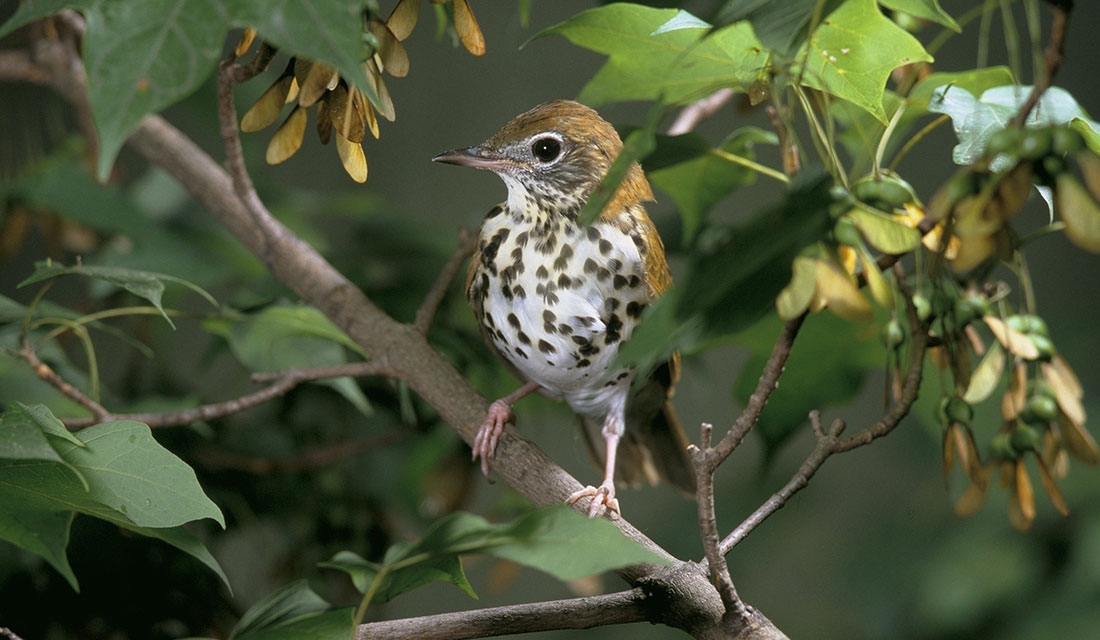Wood Thrush live in deciduous forests of the northern U.S. Their brown backs and brown-spotted breast blend into the forest floor as they scurry around for invertebrates to eat. This once common species is in sharp decline due to habitat loss on it Central American wintering grounds, cowbird nest parasitism, and acid rain which limits the availability of calcium-rich invertebrates (e.g., snails) in their diet.
ACJV staff and partners have worked to understand how patches of early- successional habitat (e.g., patch cuts) in landscapes dominated by mature forest can benefit forest-interior species like Wood Thrush, which may prefer the dense cover of shrubby openings both for rearing broods and by molting adults after the breeding season.

